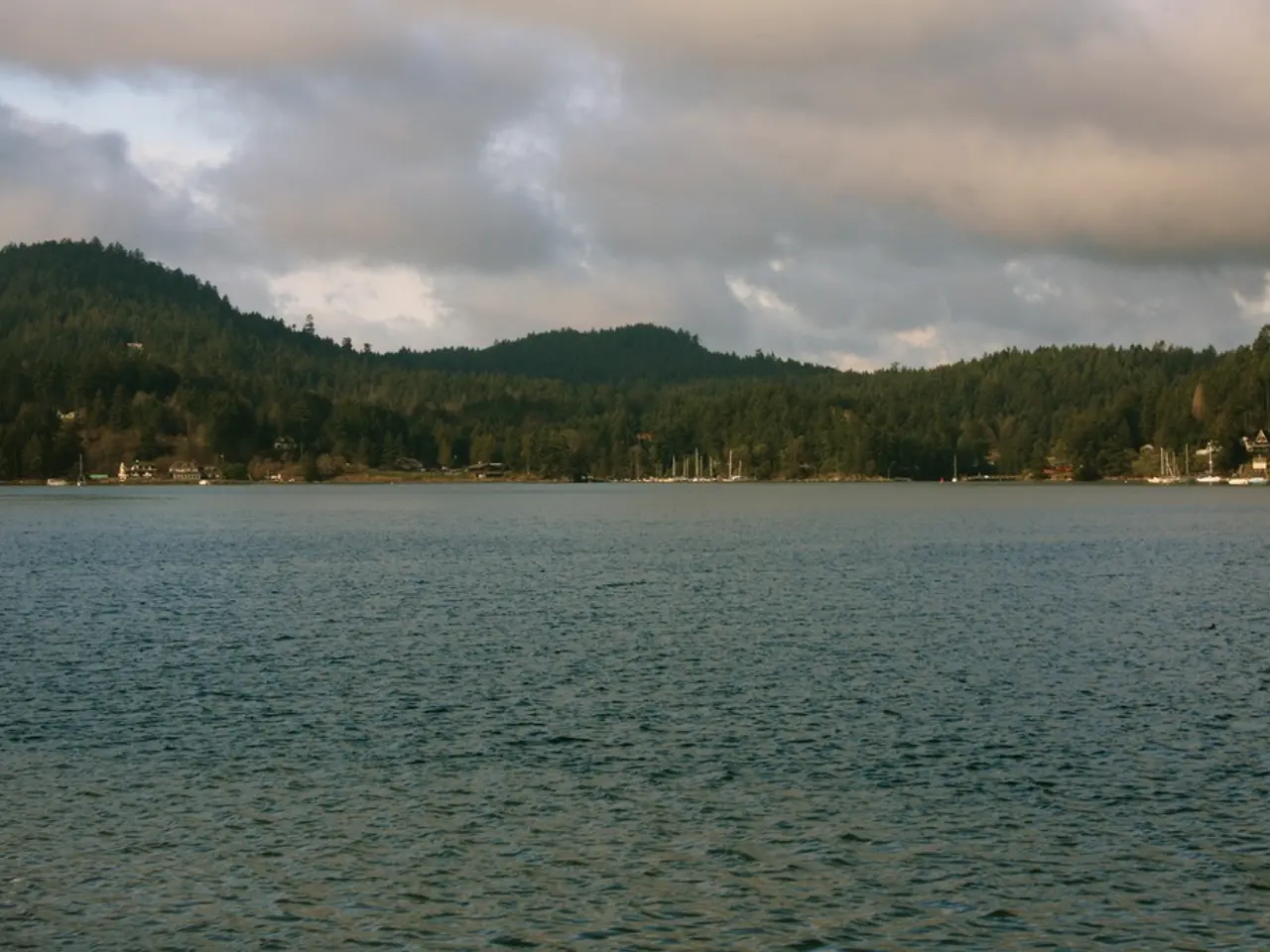Uncontrolled Development and Glacial Rupture Lead to Devastating Mudslide in Uttarkashi
Uttarkashi Mudslide Disaster: A Wake-Up Call for Himalayan Sustainability
The Uttarkashi mudslide disaster, which occurred in Uttarakhand's Uttarkashi district, has claimed five lives and left many more missing, including 11 soldiers. The disaster was likely caused by a glacial lake outburst, not a cloudburst, as preliminary data from the India Meteorological Department shows no cloudburst occurred in the area.
Experts suggest that a glacial snout at high altitude (around 6,700 m) detached or a glacial lake breached due to moraine failure, releasing massive water and debris downstream rapidly. This GLOF scenario is supported by satellite imagery showing glacial moraine and possible lake formation behind landslide dams.
The disaster zone is built on an alluvial fan formed by sediment deposits from earlier floods, making it naturally unstable. Soil erosion, deforestation, and unchecked construction on such fragile slopes have weakened the landscape, facilitating slope failures and increasing flood risks.
Climate change intensified these natural hazards, causing glacial melt and forming unstable lakes. Changing rainfall patterns also caused rapid groundwater recharge and erosion. The region is prone to intense monsoon rainfall, which combines with steep topography to worsen floods.
Unregulated development, riverbed encroachment, and failure to implement disaster management guidelines have contributed to disaster severity and reduced community resilience. The Central and state governments are under scrutiny for failing to enforce environmental laws.
Congress MP Ranjeet Ranjan has referred to the disaster as a "man-made calamity" and questioned why permissions were granted for road-widening projects despite warnings from the Environment Ministry's 2023 Environmental Impact Assessment report. Opposition leaders have called for ecological audits and suspension of construction in sensitive zones.
To prevent similar disasters, experts are emphasizing long-term resilience strategies, including the establishment of real-time monitoring systems for glacial lakes in the upper Himalayas. Comprehensive hazard mapping and monitoring, early warning systems and real-time monitoring, strict regulation and sustainable land use, disaster preparedness and capacity building, independent post-disaster reviews and accountability, and climate adaptation integration are crucial steps for reducing the risk and impact of disasters like the Uttarkashi mudslide.
The disaster has made it clear that India can no longer afford to treat the Himalayas as an unlimited resource. Sustainable practices, strict policy enforcement, and public awareness will be critical in safeguarding the future of these mountain communities. Samajwadi Party president Akhilesh Yadav has echoed a call to save the Himalayas and its rivers. Congress MP Priyanka Gandhi Vadra has called for a national disaster prevention policy for eco-sensitive zones like Uttarakhand.
As the nation grapples with the aftermath of the Uttarkashi mudslide, it is essential to learn from this disaster and implement measures to prevent future catastrophes. The future of the Himalayas and its communities depends on it.
- The Uttarkashi mudslide disaster, triggered by climate-change-induced glacial melt and unstable landscapes, underscores the need for increased focus on environmental-science-based policy decisions in politics.
- General-news outlets should highlight not only the disaster's aftermath but also the importance of comprehensive hazard mapping and monitoring, real-time glacial lake monitoring systems, and strict regulation in environmental-science discussions.
- Accidents like the Uttarkashi mudslide underscore the need for sustainable practices, policy enforcement, and public awareness in the field of environmental science to safeguard the Himalayas and its communities from future catastrophes.





